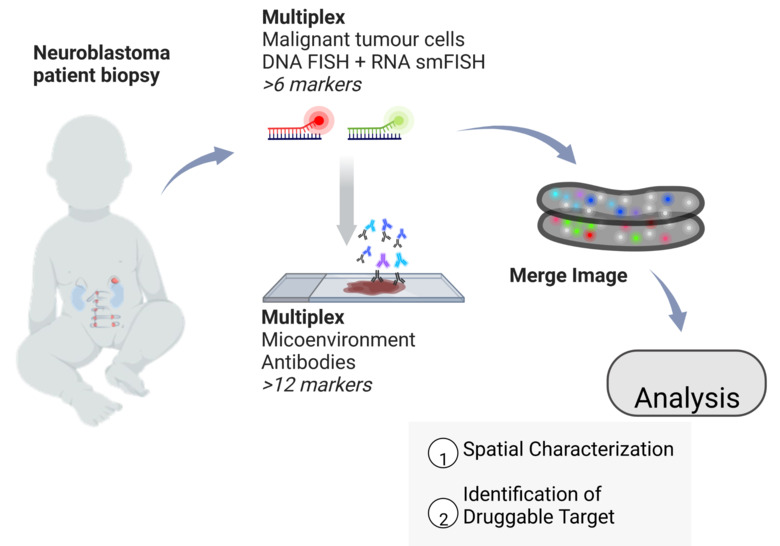Spatial multi-omics and heterogenity in neuroblastoma
Most solid tumours contain hundreds of different cell types that serve essential functions and are subject to regulation by their spatial position and neighbors. Importantly, disease formation, progression, and treatment response may be governed by unique cellular interactions.
We aim to decipher the complicated interplay between different cell types within the paediatric tumour neuroblastoma in order to investigate consequences of heterogeneity for the progression into refractory disease. We do so by a series of methodological refinements where we, on the same biopsy section, combine Spatial multi-omic techniques targeting DNA, RNA, and Protein at single-cell resolution. This is coupled with super-resolution microscopy and development of analyzing tools for simultaneous localization of targets in thousands of cells. Our research aims to provide a comprehensive repertoire of tools for studying tumour heterogeneity, while mapping the spatial principles that guide how tumour cells respond to treatment.

Recruiting:
Our group is looking for one or two eager Postdocs to join our lab.
Project: Spatial profiling of neuroblastoma using data-driven analysis.
Your application should include a CV, a personal letter and a transcript of credits.
Contact: shahrzad.shirazi.fard@ki.se
